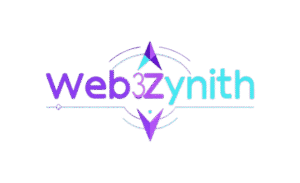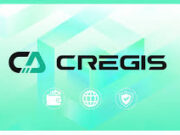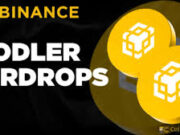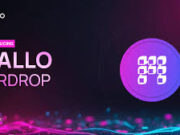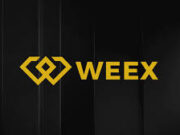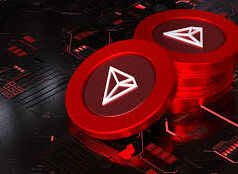Blockchain technology, often hailed as the backbone of cryptocurrencies like Bitcoin, is far more than just a buzzword in the tech world. Its decentralized, transparent, and secure nature has sparked innovations across industries, but there’s so much about blockchain that remains under the radar. In this post, we’ll uncover some lesser-known, fascinating facts about blockchain that might surprise you.
1. Blockchain Isn’t Just for Cryptocurrency
While Bitcoin brought blockchain into the spotlight, its applications extend far beyond digital currencies. Blockchain is a decentralized ledger that records transactions across a network of computers, ensuring security and transparency. Industries like healthcare, supply chain, and even entertainment are leveraging blockchain in unique ways:
- Healthcare: Blockchain secures patient data, ensuring privacy while allowing seamless sharing between authorized providers.
- Supply Chain: Companies like Walmart use blockchain to track products from farm to shelf, improving transparency and reducing fraud.
- Music Industry: Platforms like Audius use blockchain to give artists direct control over their music and royalties, cutting out middlemen.
This versatility showcases blockchain’s potential to revolutionize how we handle data and trust in various sectors.
2. It’s Not Always Decentralized
The common narrative is that blockchain is fully decentralized, meaning no single entity controls it. However, not all blockchains are created equal. There are three main types:
- Public Blockchains: Like Bitcoin and Ethereum, these are truly decentralized, open to anyone, and maintained by a global network of nodes.
- Private Blockchains: Used by businesses, these are controlled by a single organization, offering restricted access but faster transactions.
- Consortium Blockchains: A hybrid model where a group of organizations manages the network, balancing decentralization with efficiency.
This diversity means blockchain can be tailored to specific needs, challenging the one-size-fits-all perception.
3. Blockchain Can Be Eco-Friendly
A common criticism of blockchain, especially Bitcoin’s, is its energy consumption due to the Proof of Work (PoW) consensus mechanism, which requires significant computational power. However, not all blockchains are energy hogs:
- Proof of Stake (PoS): Ethereum’s shift to PoS in 2022 reduced its energy use by over 99%, making it far more sustainable.
- Energy-Efficient Chains: Blockchains like Algorand and Cardano are designed with eco-friendly mechanisms, using minimal energy compared to traditional banking systems.
As blockchain evolves, greener alternatives are proving that scalability and sustainability can coexist.
4. It’s Older Than You Think
While blockchain gained fame with Bitcoin’s launch in 2009, its conceptual roots trace back decades. In 1991, cryptographers Stuart Haber and W. Scott Stornetta published a paper on timestamping digital documents to prevent tampering—a foundational idea for blockchain. Their work introduced the concept of a chain of cryptographically linked blocks, laying the groundwork for what we now call blockchain. Bitcoin simply popularized it, but the tech’s origins are nearly 35 years old!
5. Blockchain Can Enhance Voting Systems
Imagine a voting system that’s secure, transparent, and tamper-proof. Blockchain could make this a reality. By recording votes on a decentralized ledger, blockchain ensures that votes are immutable and verifiable while preserving voter anonymity. Pilot projects, like those in West Virginia during the 2018 U.S. midterms, tested blockchain-based mobile voting for overseas military personnel. While challenges like scalability and accessibility remain, blockchain’s potential to combat election fraud is a game-changer.
6. Smart Contracts Are Mini-Programs
Smart contracts, popularized by Ethereum, are self-executing contracts with terms coded directly into the blockchain. But here’s the intriguing part: they’re essentially mini-programs that run automatically when conditions are met. For example:
- A smart contract could release payment to a freelancer only when their work is submitted and approved.
- In real estate, it could transfer property ownership once payment is verified, reducing paperwork and intermediaries.
This automation eliminates trust issues and streamlines processes, but it also requires precise coding to avoid costly errors—once deployed, smart contracts are often immutable.
7. Blockchain’s Role in Digital Identity
Identity theft and data breaches are rampant, but blockchain offers a solution through decentralized digital identities. Instead of storing personal data in vulnerable centralized databases, blockchain-based identity systems let individuals control their own data. Projects like SelfKey and uPort allow users to share only necessary information (e.g., age verification without revealing your full identity) with businesses or governments. This could redefine privacy and security in the digital age.
8. It’s Not Unhackable
Blockchain’s reputation for security is well-earned, but it’s not invincible. While the blockchain itself is highly secure due to cryptographic hashing and decentralization, vulnerabilities exist at its edges:
- Smart Contract Bugs: Flaws in code, like the 2016 DAO hack on Ethereum, led to millions in losses.
- 51% Attacks: If a single entity controls over 50% of a blockchain’s computing power, they could manipulate transactions, though this is rare on large networks.
- Wallet Hacks: Private keys, not the blockchain, are often the weak link, as seen in numerous crypto exchange breaches.
Understanding these limitations is crucial for building trust in blockchain systems.
9. Blockchain in Space?
Yes, blockchain is reaching for the stars—literally. Companies like SpaceChain are exploring blockchain for space applications, such as securing satellite communications and enabling decentralized data storage in orbit. By running blockchain nodes on satellites, they aim to create a tamper-proof, global network resistant to terrestrial disruptions. This sci-fi-esque use case highlights blockchain’s boundary-pushing potential.
10. It Could Transform Charity
Charitable donations often face scrutiny over transparency—how much actually reaches the cause? Blockchain can address this by tracking donations from giver to recipient. Platforms like GiveTrack allow donors to see exactly how their funds are used, ensuring accountability. This could rebuild trust in philanthropy, encouraging more giving.
Final Thoughts
Blockchain is more than a tech trend; it’s a paradigm shift with applications that stretch far beyond cryptocurrency. From its surprising origins to its potential in space, healthcare, and voting, blockchain continues to evolve in ways that challenge our assumptions. As we uncover its possibilities, one thing is clear: we’ve only scratched the surface of what this technology can do.
What’s the most intriguing blockchain fact you’ve come across? Let us know in the comments, and stay tuned for more deep dives into the tech shaping our future!
